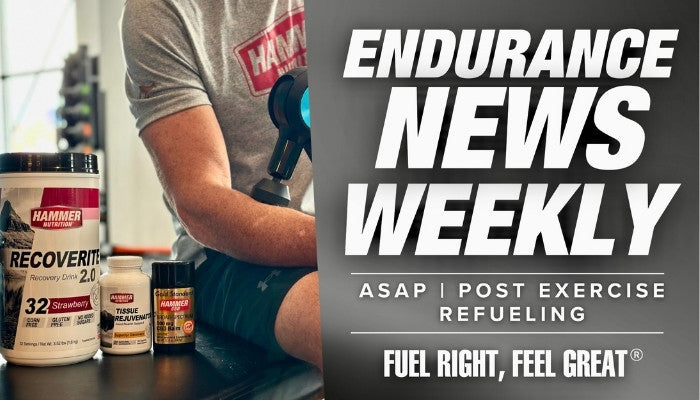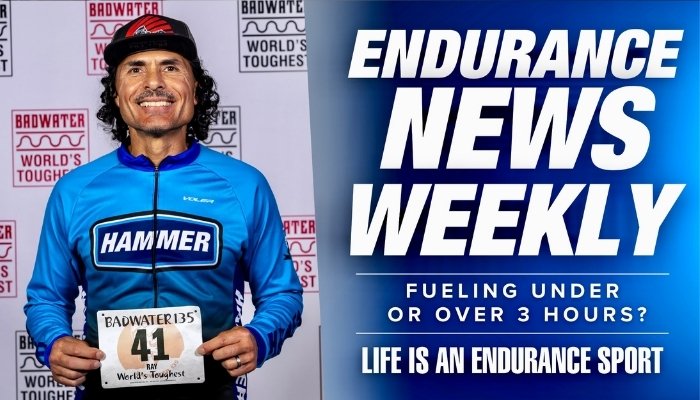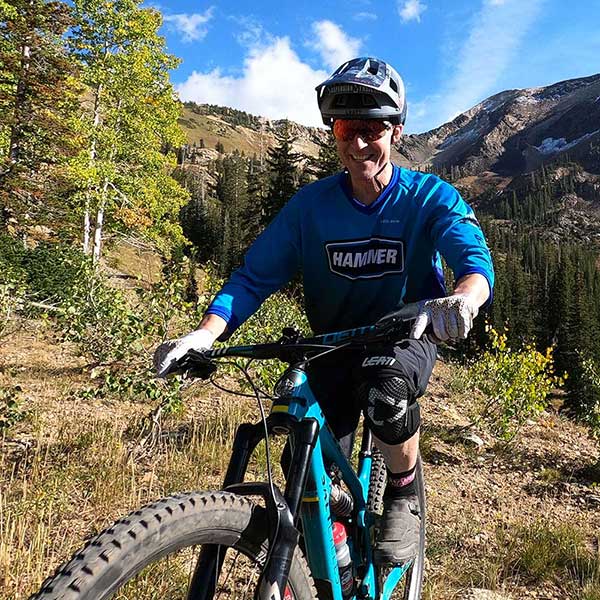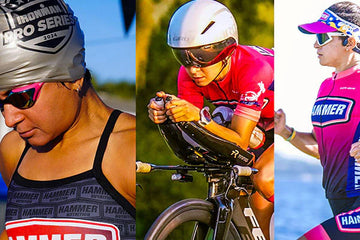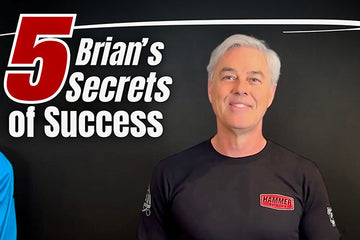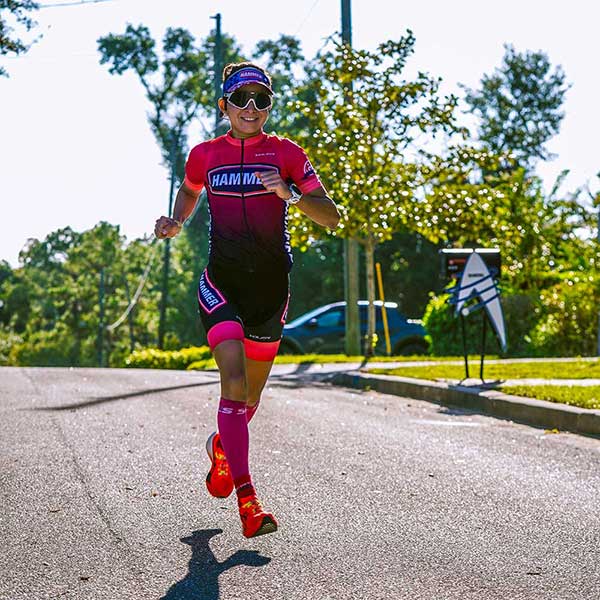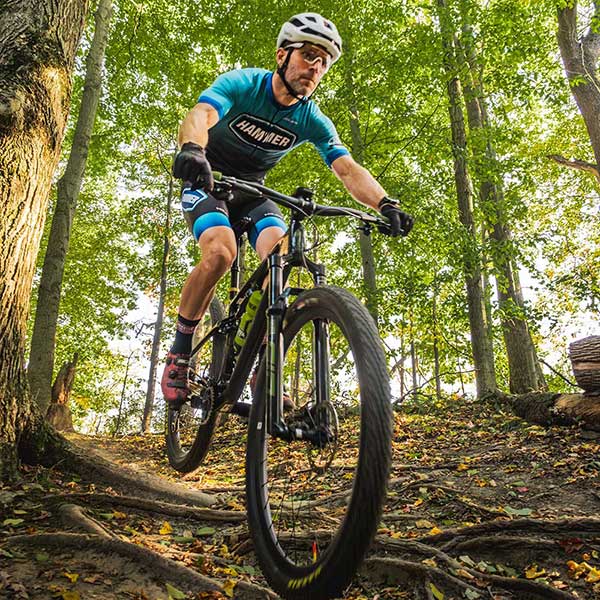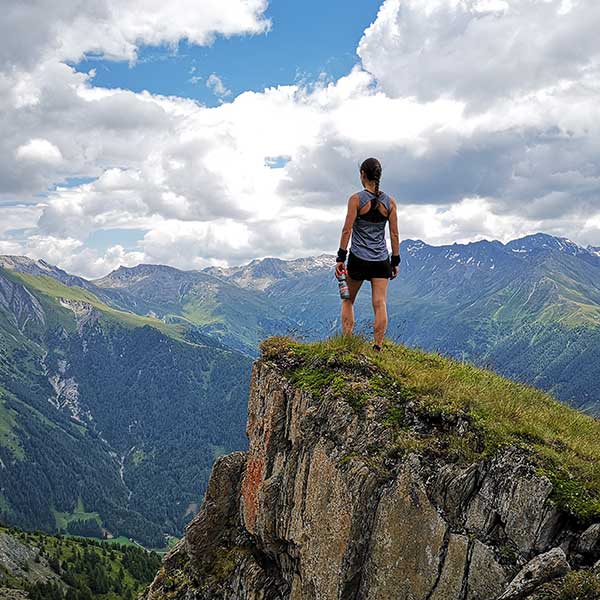
BY DEAN KARNAZES
When you get right down to it, endurance sports are principally about one thing: suffering. How much pain and anguish is one willing to tolerate in an effort to reach the finish line. A fast 10K stings, though typically concludes within an hour, even on the most grueling of courses. A tough marathon is a punishment that lasts several hours. A hundred-mile ultramarathon takes suffering to another level. Don’t get me wrong, the suffering isn’t the entire picture when it comes to running great distances. In between the torrent and agony come moments of transcendent bliss that can approach the divine, especially if the ultramarathon is set in someplace magnificent like Patagonia.
I didn’t plan on having a horrible race; nobody ever does. My sights were set high, as this race was significant. You see, I was returning to Patagonia to participate in a race I’d first run during the inaugural edition in 2010. Back then, the race was 50-miles. Since that time, Patagonia Run has grown into the largest trail race in South America, and the distance has increased to 100-miles, twice the original length. I like longer distances. Yes, this was going to be a fine race, I told myself.
Things went halfway decent for the first nine miles. Yes, the terrain was steep, and yes, the entire pack went out too quickly in our adrenaline-fueled zest, but I felt within my abilities. But at mile ten, something changed. It started with a queasiness deep in my stomach. Usually, I have an iron-clad stomach, so GI distress is not something I’m used to dealing with. I was fueling with Hammer Gel, a product I know and trust and have used at many races for many years. The gels weren’t the problem. I’d eaten ceviche (raw fish) the night prior, and I started to wonder if that could be the culprit? Whatever the case, I was horribly nauseous and the race had yet to truly get underway. Suck it up, ultramarathon man.
There is a place I go when things get ugly. It’s actually a happy place, decrepit and miserable as it is. My mind turns inward, and I put the blinders on all things pertaining to the future and wall off any thoughts of the past. All I focus on is the present moment of time—the here and now—and complete effort is directed toward a single activity: putting one foot in front of the other to the best of my ability. Before me was a relentless and seemingly impossible 90 miles of course still left to cover. Mind over miles, I reminded myself and took another step.
Arduous as my progress is, I manage to continue advancing through the day, and eventually, nightfall arrives. It gets dark in Patagonia. Very dark. One forgets how dark it gets when you’re far, far away from any sources of light. But I am prepared. I pull my main headlamp from my backpack and switch it on. It doesn’t turn on. I try again. Nothing. I must have accidentally flipped the switch on while rummaging through my backpack during the day; it had run out of juice. No problem. I pull out my backup headlamp and switch it on. Nothing. WTF! I fumble in the darkness and replace the batteries (being the seasoned vet that I am, I carried one rechargeable headlight and one with batteries). Even with fresh batteries, my backup light still doesn’t turn on. It must be a broken bulb.
Thankfully two fellow runners find me in the darkness and graciously share the glow of their lights so I can continue. We try to communicate, but they speak no English, and my Spanish is atrocious. Eventually, we arrive at an aid station where I have a third flashlight stashed in my drop bag for just such emergencies.
“Mucho gracias,” I thank them. “De nada,” they offer in return. They were being polite; it was much more than “it’s nothing,” trying to guide me on a thin trail through the wilderness with a shared beam of light.
Once inside the sanctuary of the aid station, a volunteer brings me my drop bag. I dig through it and find my emergency lamp, one I’ve never had to use before. I switch it on. You guessed it, nothing. At moments like these, one can only laugh. You feel like a complete idiot, but what more could I have done? My motto is always to have a backup plan for your backup plan. Should I have a backup plan for my backup plans backup? One can only go so far.
As if God had planned it, there happened to be a mountaineer volunteering at the aid station. He saw my predicament and gave me his light. Peeled it right off his head and handed it to me. I offered to pay him, but he would have none of it. We clasp hands, and my faith in humanity is renewed.
With a fresh headlamp in place, I set off with renewed hope, in the wrong direction. It won’t be the first time I get lost. The course itself was very well marked, but when departing from the aid stations, it wasn’t always clear which way to go. And I came to realize that no one understood my attempts to ask if I was going in the right direction. They responded to my unintelligible English queries with enthusiastic smiles and head nods. They were just trying to be positive but had no idea what I was asking. And to think, I took two years of Spanish in high school! Serves me damn right.
The nausea continues. If you’ve ever experienced the sensation of feeling ravished on one hand, while the thought of eating seems utterly repulsive on the other, you’re in my reality. My fueling and hydration strategy at this point consists of Raw Energy Hammer Bars (I find the Oatmeal Apple and Coconut Chocolate Chip flavors sit the best), two Endurolytes Extreme caps per hour, and Endurolytes Fizz tabs in my water (the effervescence helps me belch, which brings a great sense of relief). In between, I suck on Perpetuem Solids to add additional calories and keep my mouth moist. I’m fueling to the best of my ability, and it’s keeping me going.
As dawn emerges the next morning, so does a storm. Running in the rain is not unpleasant for a while. But hour after hour of rain begins to wither the skin. On the upside, the dust we’d experienced earlier in the race was now eliminated. On the downside, the mud it created was slippery as slime. Even when running on flat terrain, your feet would unexpectedly fly out from under you. And on the downslopes, it was a matter of how deeply could you dig your nails into the earth to arrest the sliding (potentially off rather steep descents, more accurately, cliffs, although I tried not to think of it in those terms).
The rain kept coming down. The climbing and descending kept getting more acute. In total, there would be 28,445’ of up and down. For comparison, the highest peak in South America, Aconcagua, is 22,837’. Each progressive aid station becomes more like an infirmary. Ruined bodies lay strewn about, lifeless and sullen. Why do we ultramarathoners subject ourselves to such violence? Certainly, we understand that running a hundred miles through the mountains will come at a cost. But to us, the cost of not taking up such a challenge would be much higher than doing what we’re doing. We can, so we must. Anything less would be a compromised existence.
At a point, the racecourse enters a lake. Seriously? I must be lost, but the trail markers clearly lead into the water. At first, I am reluctant to get in. But then I embrace the absurdity of it all. I’ve been at plenty of ultramarathons before that ford streams, even rivers, but never a lake. I trudge through thigh-deep water for perhaps a mile. At this juncture, I’ve stopped checking time and distance. All that matters is the present moment of time; everything else has melted into background noise. My lower torso is drenched, and my gloves are sopping wet, the two shriveled and pallid hands inside have lost all feeling.
More aid stations come and go. More carnage is witnessed. My fellow racers are crumbling, and these are not people prone to crumbling easily. These are fighters, survivors, warriors till the very end. I see one athlete lying on his back on a cot near a fire. He looks like a pharaoh in his grave, hands clasped together resting upon his chest. His shoes have been taken off, and his feet appear petrified, white, fissured, and stone-like.
Nightfall on day two approaches. I am still moving forward, slowly. Each contact with earth brings a brief electrical shock up my torso, though I am thankful for the jolt. It’s keeping me awake. I tell myself that if I still perceive pain, then I must still be alive. And if I’m still alive, I should be grateful.
What now stands between me and the finish line is a hellacious and exposed 3,200’ climb. In the next ten miles the course will progress up the side of a mountain on a narrow, rooted, and muddy single-track trail, and there is no support along the way. I set off. Once on the ridgeline, the wind is ferocious. Everything attached to me clatters and flaps hysterically in the gusts; the noise is deafening. I get blown sideways, steady myself and plant one weary foot on the ground after the next. It is laborious, plodding drudgework. My fingers are deadened, my toes are without sensation, my jaw feels anesthetized. When I touch the tip of my nose, nothing registers. I am fading in and out of consciousness, as though in a dream, though a dream with very real consequences should I misstep. Another gust blows me sideways, and I feel my toes clawing into the footbeds of my shoes. It’s been said that without war, we do not know if we are cowards or heroes… here I have my war.
At this stage of the war, only one thing matters to me: getting to the finish line. I hadn’t come to Patagonia to start a race; I’d come to Patagonia to finish a race. Making it 90 miles in a 100-mile race counts for little. A DNF is a DNF. Eventually, I reach a sign that reads: 9km to the finish. That’s a mere 5.6 miles. I have roughly three hours to cover that distance, and I am elated. Prospects are encouraging. I set my sights on arriving within an hour, actually. The course has now become a graded fire road, much more runnable than the rooted and rocky terrain of earlier sections. An hour is totally doable, I tell myself.
Yeah, right. How many times I got lost in those final miles will never be known. My borrowed headlamp is now barely casting any light, and the totality of my concentration is absorbed on not tripping. It shouldn’t be long, I keep thinking. From my vantage point, I can see the finish line off to my left, and I can hear the music and the announcer’s voice very clearly. But the path I’m following is moving away from this location, not towards it. An hour passed, and the finish area is now completely out of sight. I hear nothing. So I turn around.
When I get back to the main fire road, I come upon another runner. I ask him if we’re going in the right direction? He looks at me as though I’m from outer space. I try again, but it is clear my words are not getting through. I find other runners, but they all seem to be in a collective delirium, shuffling along in a comatose haze, eyes vacant, cheeks ashen and withered, feet barely clearing the earth. There are dimly lit houses with bonfires setback on either side of the road, and I cannot tell if they are aid stations or private residences. I hear muffled conversation but cannot decipher if they are addressing me? Then I suddenly see two ginormous white orbs staring at me. The sight is spooky and ethereal. My pace slackens, and I proceed with trepidation until I realize it is a horse in the road, just standing there, looking at me with its bulbous protruding eyes illuminated in the diffuse cast of my headlamp. Two hours pass.
When I finally wind down a trail that appears to lead into town, my headlamp is diminished to little more than a dim yellow glow. But then I’m suddenly bombarded with light. It is blinding and overwhelming. Someone apparently thought that shining bright spotlights directly into your eyes is going to help with visibility. It does just the opposite. Perhaps my pupils have become permanently dilated in response to navigating through the darkness for so many hours on end. Whatever the case, all I see is white. I can hear voices in the distance, but I cannot decipher if they are yelling at me or at something else. I shield my eyes with my hands and yell back, “AM I GOING THE RIGHT WAY?” Their yelling intensifies. I cannot understand a word of it. I see confused people looking at me, pointing, waving, and gesturing, but they all seem to be contradicting one another. It is midnight, and I have now been running for 36 hours. Is it my mind that’s malfunctioning, or theirs? Logic goes out the window when you’ve been running for two nights straight.
A lady holds a phone in front of me, and I can see it’s opened to Google Translate. I speak to her phone, “Am…I…going…the…right…way?” She pulls the phone back and looks at Google’s translation. “Sí! Sí!” she proclaims wildly. Everyone else joins in the screaming. I turn to run, she slaps me on the back, and I abruptly trip over the curb and faceplant. The impact sound is like a boxer being KO’d by a wicked left hook in the 9th round. Five or six people rush over and start dragging me to my feet. I resist, trying to explain that I cannot accept outside assistance, “No bueno, no bueno…” I plead. They look at me confused. I scrape myself off the pavement and take a matadors bow. They look more confused but applaud nonetheless. I’m not sure they had anything to do with the race.
Off I zip down the cobblestone roadway towards the finishers shoot. How running 5.6 miles took me over three hours is inconsequential. How much time I spent retracing my own steps in the darkness didn’t matter. What mattered is that I’d made it; I’d stayed the course and grunted my way through it. I cross the finish line, and a race official places a medal over my head. The trial has favorably concluded. I feel like Odysseus. I stagger back to my hotel room and shower. The washbasin looks like a mud pit. I drink a packet of Strawberry Recoverite and take 50mg’s of Hammer CBD along with two REM Caps and drifted into a deep slumber. The next morning, I come to learn that nearly half the pack were left not with finisher medals around their necks but with DNF’s next to their names. I’ve been at tough races before, but when 154 seasoned and elite ultrarunners don’t make it to the finish line, you know it’s been hell. These are people that don’t give up without putting everything on the line. As this oldtimer can tell you, DNF’s never go away.
In the aftermath, you might wonder if I’d ever return to Patagonia Run? Absolutely! I intend to be there next year, in fact. Sure, I’d like to improve upon my time, but I’ve learned that such pursuits can be like chasing windmills. The experience I had this year might be impossible to better, for it was redemptive in a way a good race could never be. I proved to myself that I am still capable of putting my head down and grunting my way through anything. Such reaffirmations in life are rare. When things get really ugly, I can still get the job done. Never in my life had I worked so diligently to make it to a finish line; never before had I suffered so deeply. Patagoina Run 2022 wasn’t pretty, it was beautiful.
-----------------------------------
Hammer Nutrition global athlete Dean Karnazes is an ultramarathoner and NY Times bestselling author. Dean’s the 3x winner of Competitor Magazine’s Endurance Athlete of the Year crown and a recipient of the President’s Council on Sports, Fitness & Nutrition Lifetime Achievement Award.
